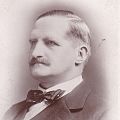
Avon was a non-metropolitan and ceremonial county in the west of England that existed between 1974 and 1996. The county was named after the River Avon, which flows through the area. It was formed from the county boroughs of Bristol and Bath, together with parts of the administrative counties of Gloucestershire and Somerset.
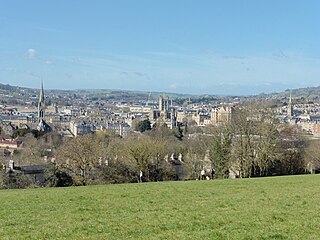
Bath and North East Somerset (B&NES) is a unitary authority district in Somerset, South West England. Bath and North East Somerset Council was created on 1 April 1996 following the abolition of the county of Avon. It is part of the ceremonial county of Somerset.

Bridgwater is a parliamentary constituency represented in the House of Commons of the Parliament of the United Kingdom since 2024 by Ashley Fox of the Conservative Party. It elects one Member of Parliament (MP) by the first past the post system of election.
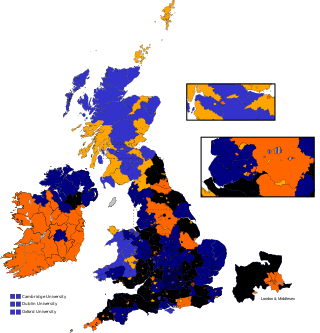
East Gloucestershire, formally the Eastern division of Gloucestershire and often referred to as Gloucestershire Eastern, was a parliamentary constituency in Gloucestershire, represented in the House of Commons of the Parliament of the United Kingdom. It elected two Members of Parliament (MPs) using the bloc vote system.

Bath is a constituency in the House of Commons of the Parliament of the United Kingdom represented since 2017 by Wera Hobhouse of the Liberal Democrats.
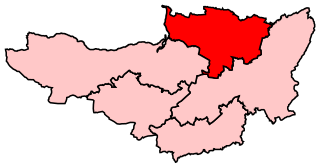
Wells was a constituency in Somerset in the House of Commons of the UK Parliament. Apart from between 2010–2015, Wells was represented by members of the Conservative Party since 1924.

Leominster was a parliamentary constituency represented until 1707 in the House of Commons of England, then until 1801 in that of Great Britain, and finally until 2010, when it disappeared in boundary changes, in the Parliament of the United Kingdom.
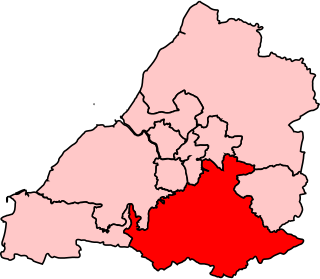
Wansdyke was a county constituency represented in the House of Commons of the Parliament of the United Kingdom. It elected one Member of Parliament (MP) by the first past the post system of election.

North East Somerset was a constituency represented in the House of Commons of the UK Parliament from 2010 to 2024. For the whole of its existence its Member of Parliament (MP) was Jacob Rees-Mogg of the Conservative Party.

Chippenham is a constituency represented in the House of Commons of the Parliament of the United Kingdom since 2024 by Sarah Gibson, a Liberal Democrat. The 2024 constituency includes the Wiltshire towns of Calne, Chippenham, Corsham and Royal Wootton Bassett.

North Somerset is a constituency represented in the House of Commons of the UK Parliament since 2024 by Sadik Al-Hassan of the Labour Party.

West Gloucestershire was a parliamentary constituency in Gloucestershire, represented in the House of Commons of the Parliament of the United Kingdom.

East Somerset was the name of a parliamentary constituency in Somerset, represented in the House of Commons of the Parliament of the United Kingdom between 1832 and 1918.

West Somerset or Somerset Western was the name of a parliamentary constituency in the county of Somerset between 1832 and 1885. It returned two Members of Parliament to the House of Commons of the Parliament of the United Kingdom, elected by the bloc vote system.
The Midsomer Norton, Radstock and District Journal is a free weekly newspaper circulated in Midsomer Norton, Radstock, Westfield, and surrounding villages in Somerset.

Westfield is a village and civil parish in Bath and North East Somerset in the ceremonial county of Somerset, England. The village lies on the Fosse Way between the towns of Radstock and Midsomer Norton.
The 1854 Frome by-election was a parliamentary by-election held in England on 24 October 1854 for the House of Commons constituency of Frome, a parliamentary borough in Somerset.

Frome and East Somerset is a constituency of the House of Commons in the UK Parliament. It was first contested at the 2024 general election. It was created from the parts of the former constituencies of Somerton and Frome and North East Somerset as a result of the 2023 Periodic Review of Westminster constituencies. It has been represented since 2024 by Anna Sabine of the Liberal Democrats.

